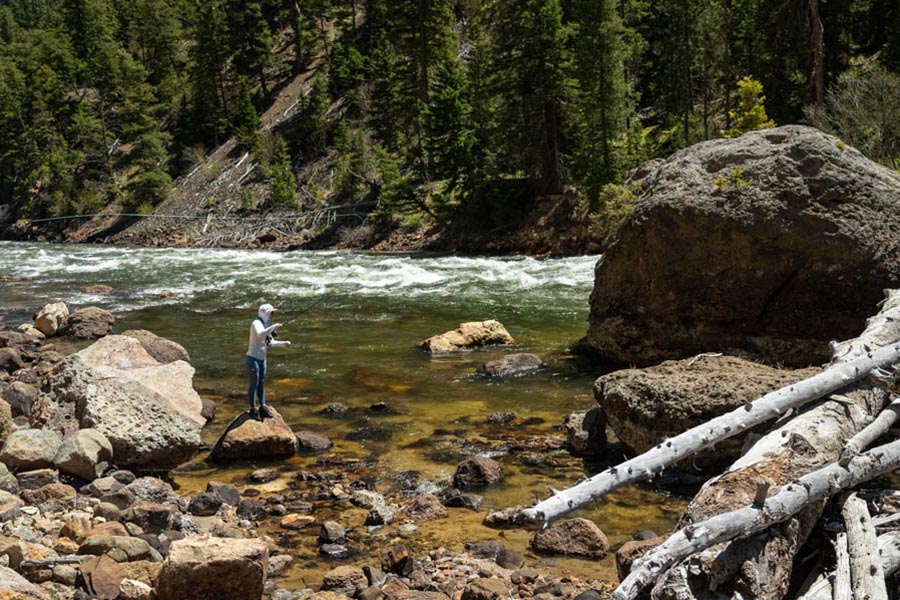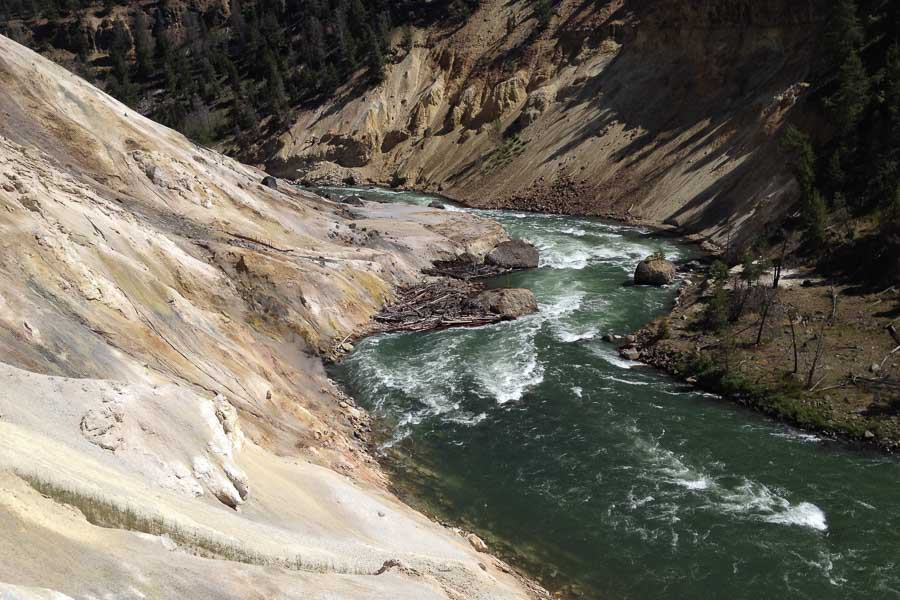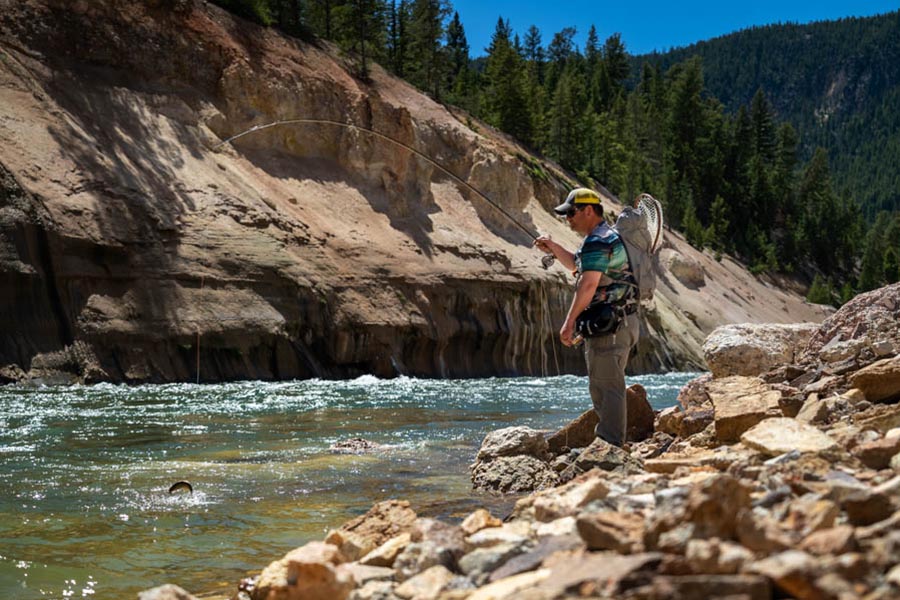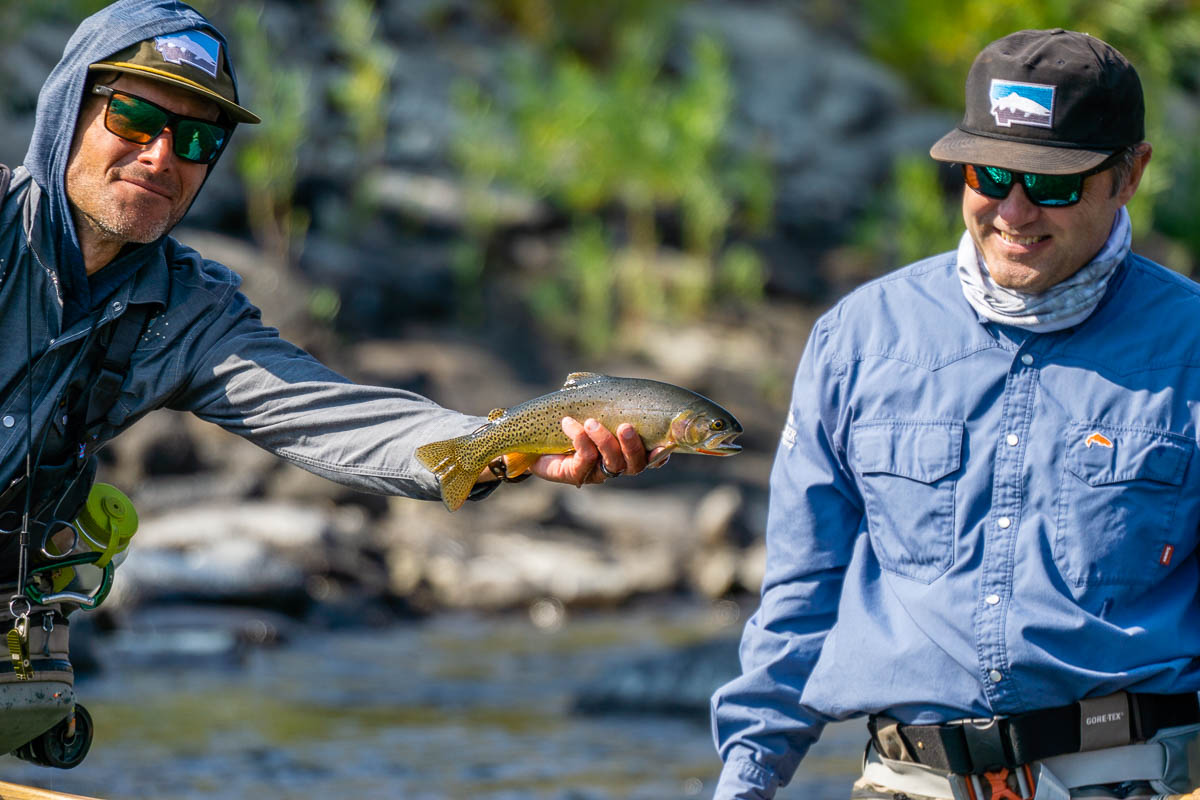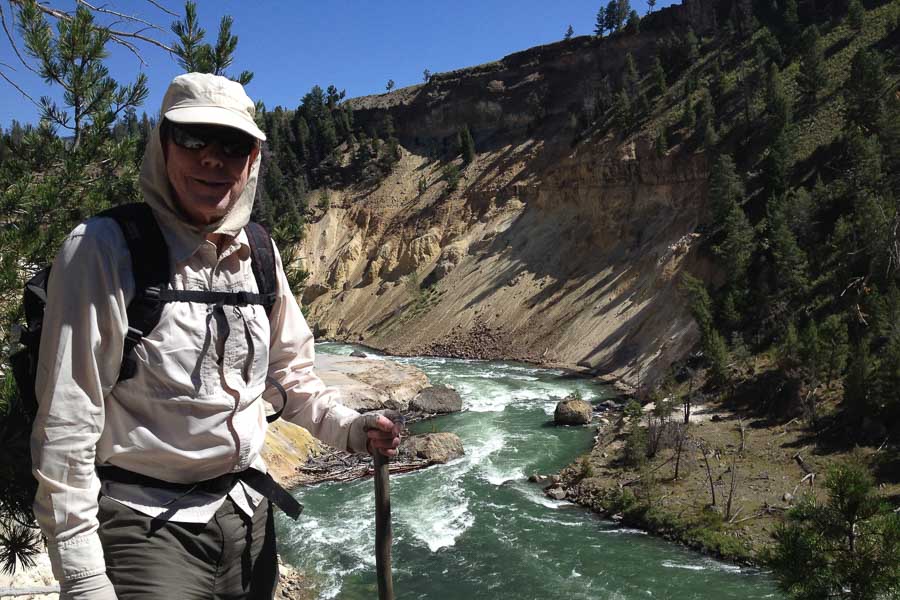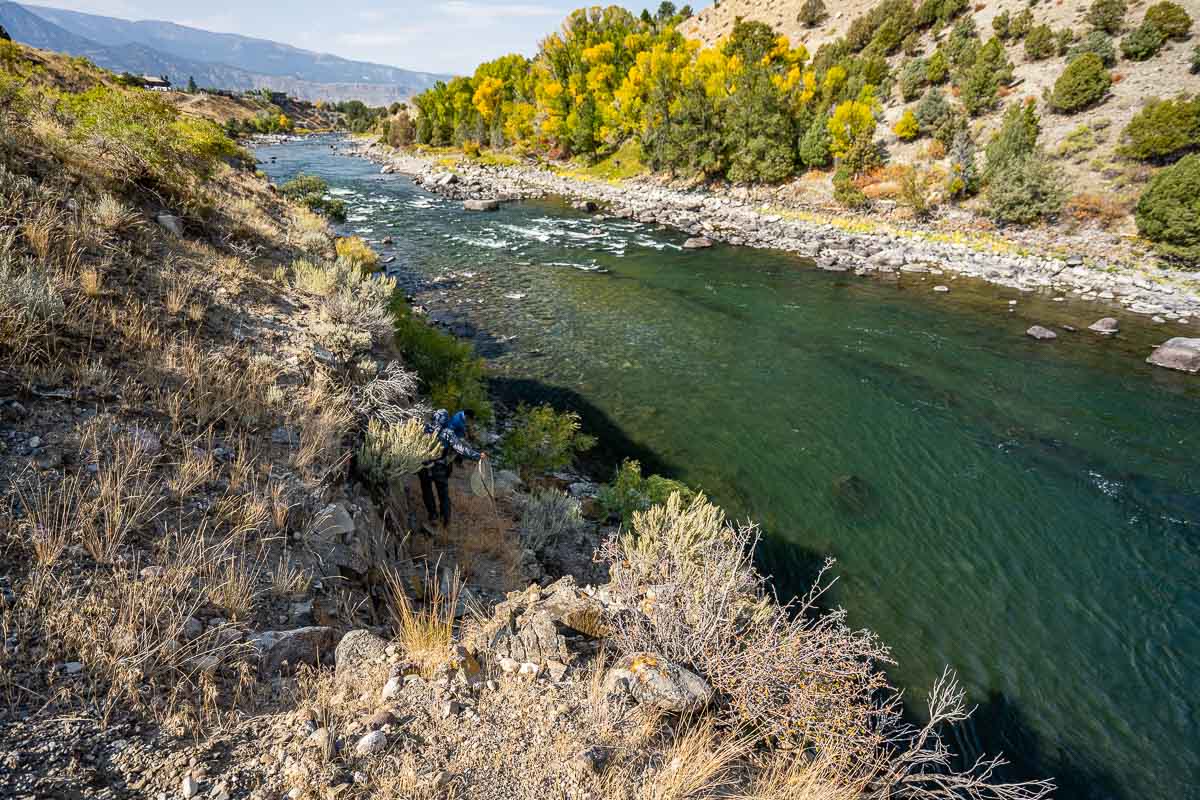The Parks’ namesake river, the Yellowstone traverses the entire park from south to north. The river rises south of the park, deep within the Teton Wilderness Area in a region known as the Thorofare. It is said that the Thorofare is the farthest one can get away from roads in the Lower 48, and it takes a 30 to 40 mile hike one way to reach. The river exits the Thorofare into Yellowstone Lake, the largest high altitude lake in North America. As you can see, this is a river of superlatives. Below the lake, access becomes more reasonable as the river traverses miles of meadows before dropping over two major waterfalls into a deep canyon.
Fly-Fishing the Yellowstone River in Yellowstone Park Overview
The Yellowstone is one of the last strongholds of the Yellowstone Cutthroat trout, and that is what draws anglers here. The river was once world renowned for the spawning run of large fish that pushed out of the lake both upstream and down. Unfortunately, this fishery has been decimated by the illegal introduction of Lake Trout into Yellowstone Lake. However, the Park Service has begun a very aggressive Lake Trout suppression program and the Cutthroat are showing signs of rebounding. The remote Thorofare region is not what it used to be in wake of large fires that added silt to the upper river and the reduction of cutthroat that spawn in the upper reaches due to the introduction of lake trout. Lake trout suppression efforts and improving stream habitat have resulted in an improvement in fish counts; although numbers haven't fully recovered in this remote region, it is once again an area worth exploring. The section of river just below Yellowstone Lake contains enough large trout and easy access to make it worthwhile. In the canyon sections of the river, the resident population of Cutthroats is as strong as ever, with the average fish coming in at 12-14” with good numbers up to 18”. The lower end of the Black Canyon, below Knowles Falls, has a population of Rainbows and Browns. These fish run about the same size on average but run larger than the Cutties at the top end. Dry fly fishing is the norm on the Yellowstone, with streamers employed during times of cold weather or a slow dry fly bite. Nymph fishing is effective but rarely necessary. A 9ft 5wt with 3x tippet is a good all around setup for the river. The Yellowstone is such a large, powerful river that most fishing is done right along the banks with minimal wading required.
Fishing the Yellowstone River in YNP - Thoroughfare Region
The headwaters of the Yellowstone are found upstream of the massive Yellowstone Lake in the Thoroughfare region. This is a true wilderness area that requires a 34 mile hike or a long boat ride across the lake to access. Most anglers that visit the Thoroughfare make it a multi-day wilderness camping experience. Grizzly bears are ever present in this remote area and the fishing is for medium sized cutthroats. The trout numbers in the Thoroughfare region dropped dramatically after the introduction of lake trout in Yellowstone Lake. In recent years trout numbers have rebounded a bit and although they are not back up to their pre lake trout levels, The best fishing is from mid July to mid September.
Fishing the Yellowstone River in YNP - Yellowstone Lake to Upper Falls
This reach of river used to be one of the most popular and productive stretches of trout water in the entire world, but the introduction of Lake Trout changed all that. Still, opportunities exist for skilled anglers who like to spot and stalk their quarry. Given the large size of the river and relatively small fish population, this is a tough place to fish blind. The river here opens on July 15th and fishes best right out of the gates; don’t bother after the first week or so of August, as most of the fish will have returned to the lake. There is no population of resident fish here so after the spawners have left it’s game over. Hatches are both plentiful and diverse in this section. The most important hatches are Green Drakes, PMD’s, Caddis, and Yellow Sally’s but you could very well encounter larger stonefly species or other varieties of Drakes. To be successful, the angler will have to both locate a rising fish and determine what insect it is feeding on. Since most fish are over 20”, this can be a worthwhile endeavour. Longer, lighter leaders are required here than on the canyon stretches of river. Think 10ft of 4x or 5x as a starting point.
Fishing the Yellowstone River in YNP - Grand Canyon of the Yellowstone
The Grand Canyon of the Yellowstone is the section of river from the falls down to the bridge just east of Roosevelt Junction along the Northeast Entrance Road. This section of river contains resident fish only and has not been impacted by the situation in Yellowstone Lake. Fish populations are healthy and plentiful.
Fishing in the Grand Canyon kicks off during the first week of July when the water has dropped sufficiently and the Salmonflies and Golden Stones begin hatching. This reach of river hosts the longest hatch of the big stones in the Park, as I have witnessed them as late as August 6 during years of cool weather and high water. They typically peter out during the later half of July, however. At this time, attractor dries and hopper patterns become the most productive choices. The fishing holds up well during August, though hot, bright afternoons often slow dry fly fishing and force the angler to dredge down deep with a streamer. As the weather cools in September, attractors and hoppers remain good bets, but look for hatches of Blue Winged Olives on cloudy days. Streamers become important during the cooler parts of the day, with the best dry action in the afternoons; the exact opposite of August. October is hit or miss on this section. Warm, Indian Summer weather brings similar fishing to September, but this section will shut down with the first real cold snap.
One interesting aspect of this fishery is how much the water drops throughout the summer. In early July, the water is high and the fish are shoved up against the banks. At this time, wading is not really even necessary as you would be walking on top of the fish. As the water drops, it gains more character and the fish start to spread out. Keep this in mind as your July honey hole is likely to be an ankle deep riffle in late September.
Black Canyon of the Yellowstone
The Black Canyon is the stretch of water from the bridge along the Northeast Entrance Road, just east of Roosevelt Junction, down to the park boundary just north of Gardiner, Montana. Fishing wise, this section of river is nearly identical to the Grand Canyon described above. The same hatches occur here and the same fly selections and techniques apply. The only minor differences are that this section of river will see hatches begin slightly earlier and the fishing will hang on a little bit longer in the fall. Also, the lower reaches of this section contain significant populations of Browns and Rainbows.
One thing to keep in mind when planning a trip in the Black Canyon is that the Lamar River, which enters just below the road bridge mentioned above, is the largest sediment producer in the Yellowstone River drainage. Summer thunderstorms along the Lamar will muddy the Yellowstone for hundreds of miles downstream. You will want to be aware of current conditions before you commit to a hike into the canyon.





